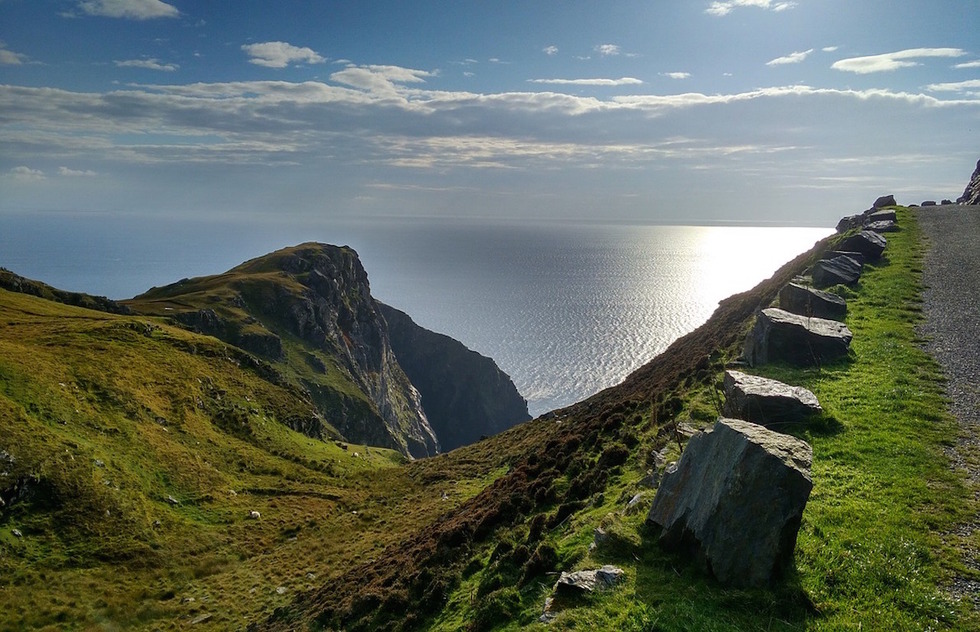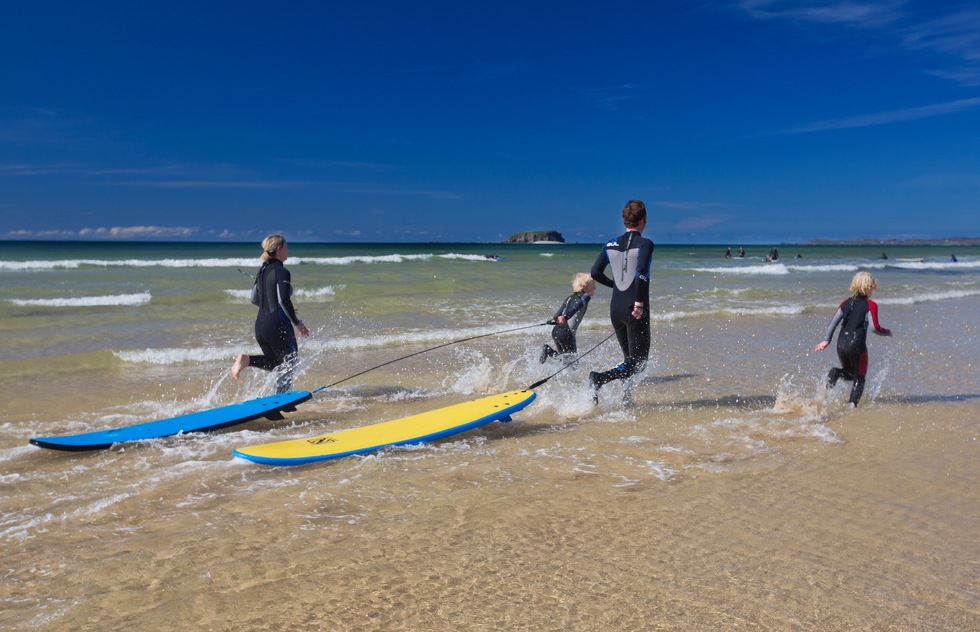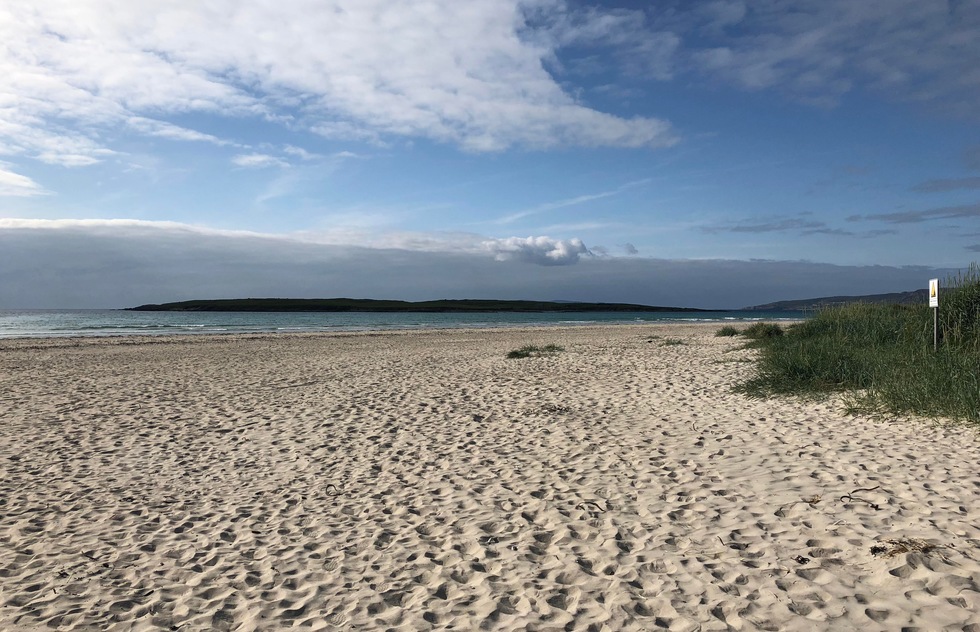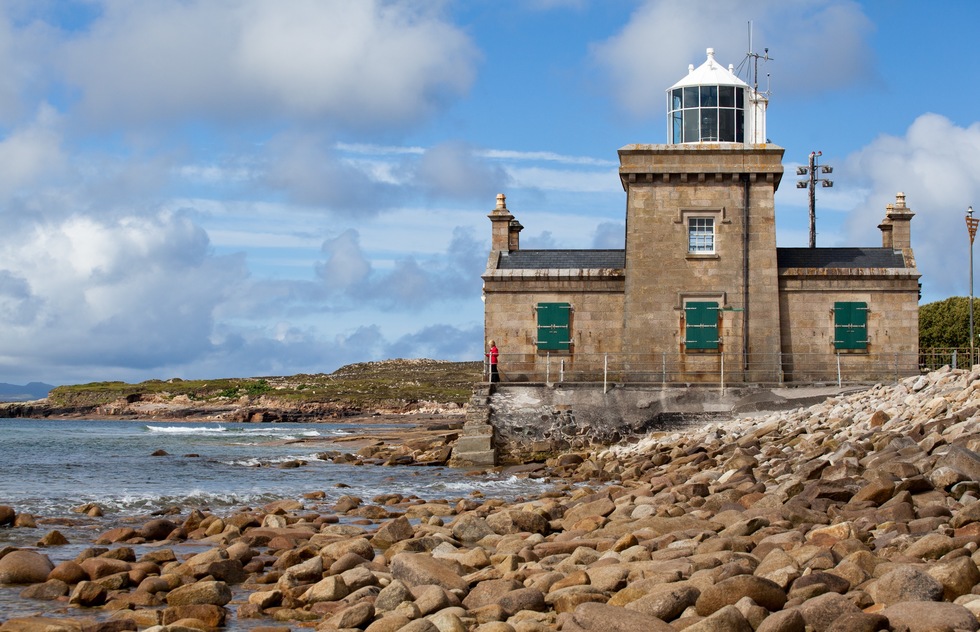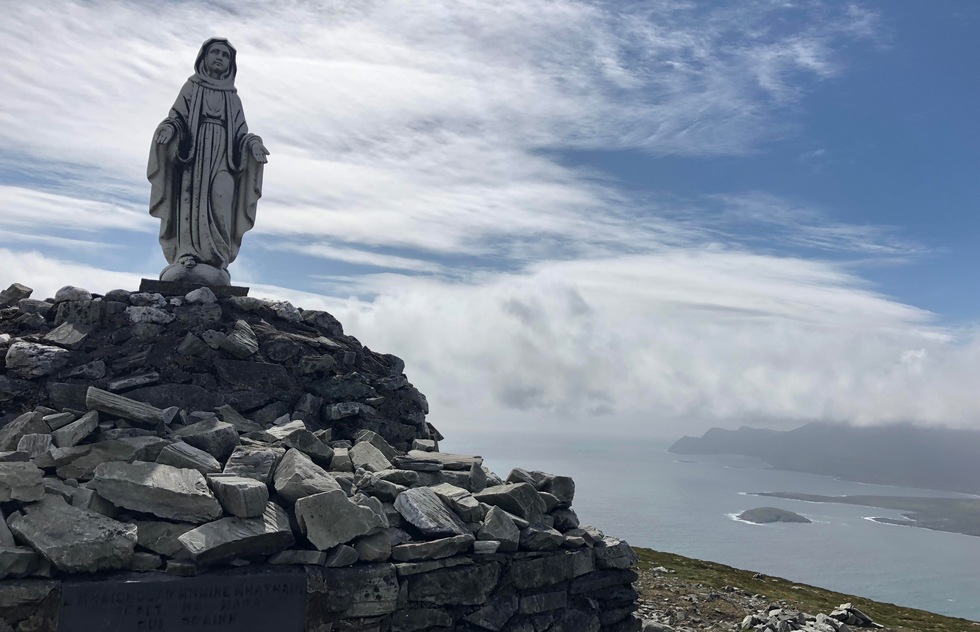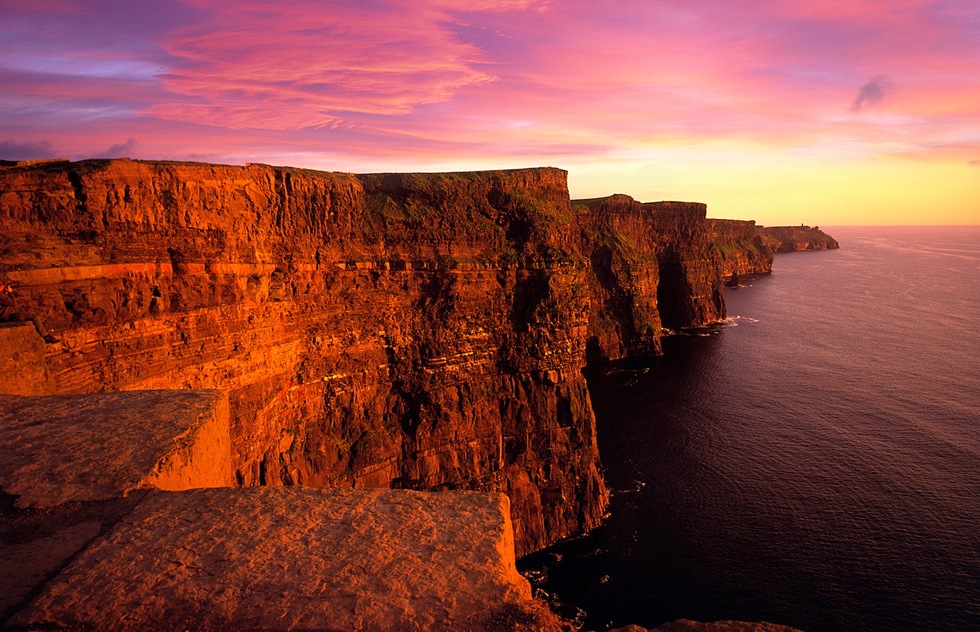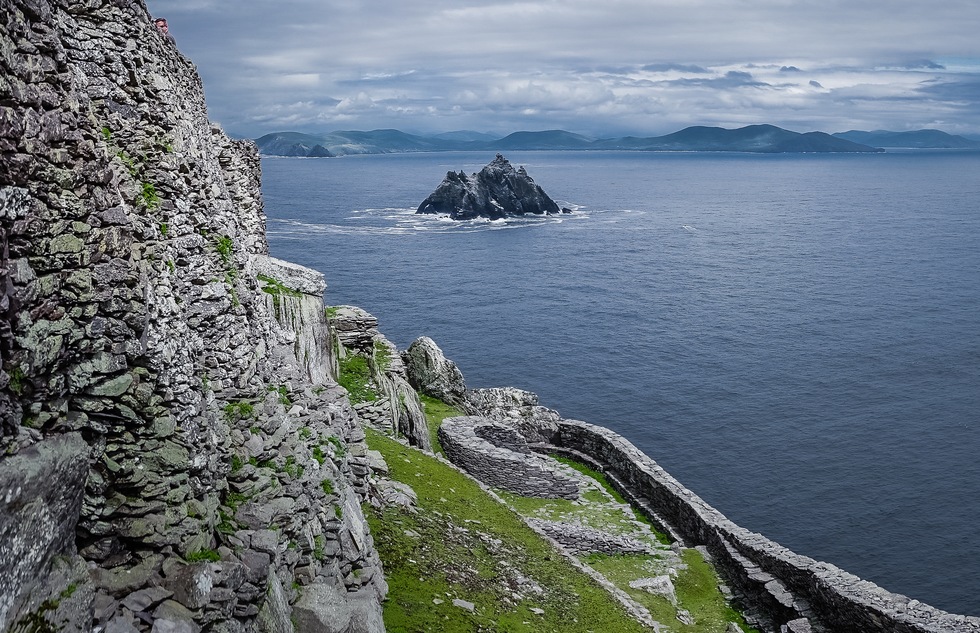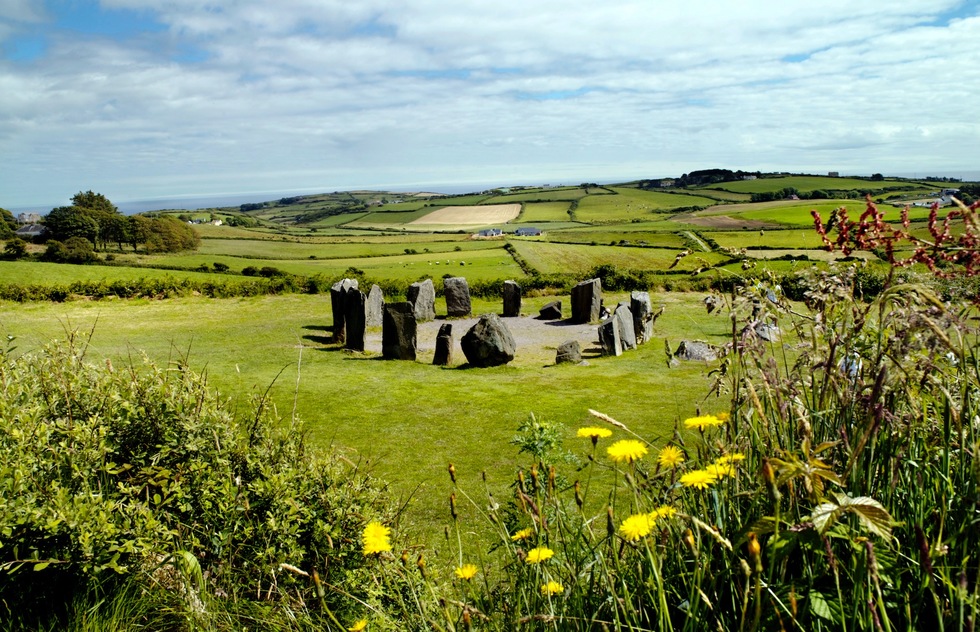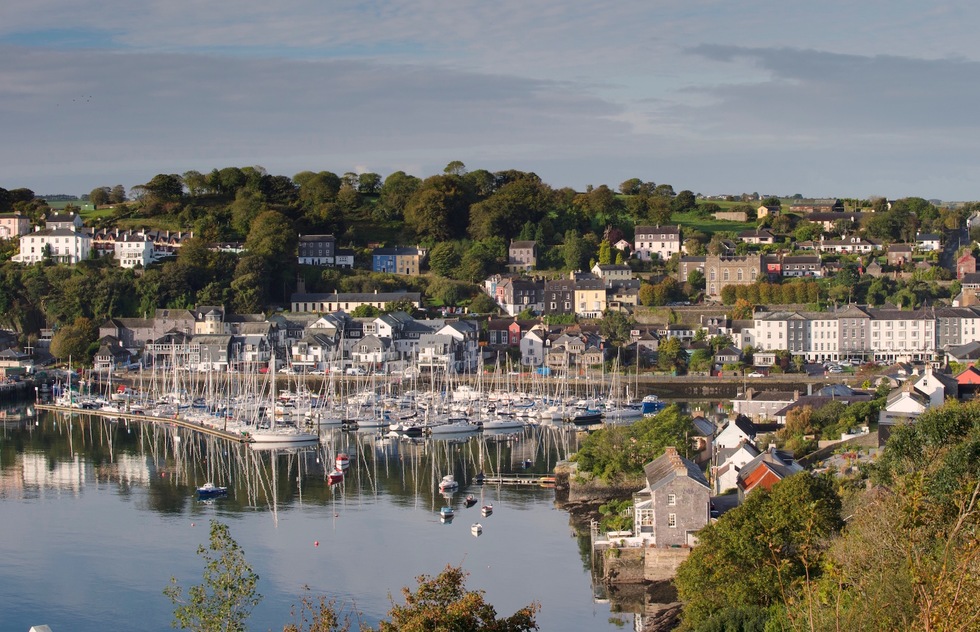Ireland’s Greatest Road Trip: The Wild Atlantic Way
By Helen OchyraIt’s a common dream among travelers: an old-fashioned Irish road trip. Few drives anywhere are more rewarding than the Wild Atlantic Way, a twisting 1,550-mile (2,500-km) route along the very edge of Europe. Starting in the island’s far north and heading south along the Atlantic seaboard to County Kerry, the drive takes in epic scenery of soaring cliffs, white sand beaches, water sports, and whales. Near the end of that odyssey, the route turns east along the south coast and into County Cork.
Summer, of course, is the prettiest season. Fly in to Derry-Londonderry (20 minutes from Donegal) and out from Cork and you’ll spend two weeks travelling the length of Ireland—from one idyllic, historic landscape to the next.
The wild and windswept county of Donegal, at the very north of Ireland, is all rugged coastline—some 180 miles (290 km) of it—with stunning view after stunning view of beaches backed by dramatic dunes that are perfect for an exhilarating horse ride with the Atlantic breeze in your hair. Donegal Equestrian Centre takes riders (even beginners) out across the dunes and along Tullan Strand on its one and two-hour beach rides.
Donegal contains Ireland's northernmost point on the mainland (and its northernmost pub, the Seaview Tavern at Malin Head). It’s also home to plenty of cozy bed and breakfasts. The official tourism website lists plenty of family-owned accommodations along the entire route.
Donegal also has some of Ireland’s, if not Europe’s, best surf breaks, and the smooth sands of Pollan Bay are ideal for your first lesson. Head out with Inishowen Surf School (wetsuit and all equipment provided) and in just three hours the instructors should have you standing. South from Donegal, you’ll pass some of Ireland’s most famous surf spots: Bundoran and Mullaghmore Head in County Sligo are famed for their epic waves. Ask around if the Prowlers are active—they can reach up to 50 feet (15 m) in height and attract surfers from around the world.
As you head further south along the Wild Atlantic Way, you’ll find yourself pulling over every few miles for yet another glorious beach. As you drive, the sun always seems to find the next white crescent, glinting off it and catching your eye as you turn a corner, begging you to get out and get your toes in the sand—so build lots of extra time in your schedule.
At Portnoo, two hours south of Pollan Bay, you’ll find Tramore Strand, running from the village of Narin in a banana-shaped sweep of pristine white. At the right tide, it even joins up to offshore Inishkeel Island, meaning you can walk across the sandbar to check out the Inishkeel Monastic Site. The two churches that remain here date from the 12th century, but the churchyard also has the remains of highly decorated stone crosses, their looped Celtic designs dating back as far as the 8th century.
Too many people skip the Mullet Peninsula as they journey south, but it’s their loss. This unspoiled Gaelic-speaking section of County Mayo is almost four hours south of Portnoo and divides the calm waters of Blacksod Bay on one side from the crashing Atlantic on the other. There are beautiful beaches and windswept walks all the way south to the tip, and that’s where you’ll find Blacksod Lighthouse. This squat stone building may not look like much, but it played a key role in D-Day. On June 3, 1944, the regular weather forecast sent to London by lighthouse keeper Ted Sweeney convinced Eisenhower to delay the Allied invasion for 24 hours. His forecasts gave the Allies the information they needed to plan an optimal attack, which led to the end of World War II. Today there’s a small plaque—and there are plenty of local people keen to tell the tale.
Ireland’s largest island, Achill, is linked to the mainland by a bridge located a 90-minute drive around the bay from Blacksod on the Mullet Peninsula on your way southward. It has some of the loveliest scenery on the Wild Atlantic Way, especially in the west, where towering sea cliffs rise above the beach of Keem. Just to the south is Minaun, a peak you can drive up. Park by the transmitter masts then hike the short way (20 minutes) up to the Statue of Our Lady, who stands atop a cairn looking out over the rugged coastline and toward the attractive village of Keel. This marble Virgin Mary is crushing a snake with her foot, representing triumph over the devil. The bay below once saw emigration on a massive scale—much of Cleveland’s Irish population can trace their ancestry back to this place.
Croagh Patrick, about an hour farther south from Achill, has been a pilgrimage site for centuries. Legend has it that St. Patrick fasted at its summit for forty days in 441 AD, and to this day there’s a small chapel at the top where pilgrims can light a candle and say a prayer. Most walkers, though, climb the 2,500-foot (765-meter) mountain for the views across beautiful Clew Bay, which is dotted with some 200 islands and surrounded by the undulating mountains of County Mayo. The ascent is steep and the stony path shifts beneath the feet, but the views—and the bragging rights—are worth the effort. It’s one of the most popular things to do in this region. Allow 4–5 hours.
On the west coast of Ireland, sunsets light the sky like fire from above your head all the way to the watery horizon. The Wild Atlantic Way offers plenty of places to stop and enjoy the nightly show, but perhaps the best viewpoints are along the Cliffs of Moher, two and a half hours south of Croagh Patrick in County Clare (and about 90 minutes south of Galway city), roughly halfway along the Wild Atlantic Way route. Here, sea cliffs tower above crashing waves running for some 5 miles (8 km). During the day, check out the visitor center’s exhibit on this ancient landscape and its geology, and walk up to the platform at O’Brien’s Tower. But stay after hours to enjoy the sunset—there’s no time limit on your visit.
You can’t come to Ireland without trying a dram of the country’s famous whiskey, once the most popular spirit in the world and today growing again as an industry. One of the most popular places on the Wild Atlantic Way for a taste is Dingle, three and a half hours south of the Cliffs of Moher in County Kerry. The town's artisan distillery produces a triple-distilled single malt whiskey in small batches, as well as a gin and a vodka. The distillery tour is a great introduction to whiskeymaking, allowing visitors to see the production process from start to finish. Afterward, hit the pubs of Dingle Town (lively O’Sullivan’s Courthouse Pub always has a warm welcome), where you’ll find a range of labels to try, as well as plenty of Guinness and live traditional music.
Off the tip of the Iveragh Peninsula in County Kerry, two hours south of Dingle, the two Skellig Islands appear like dinosaurs’ teeth amid the swell of the Atlantic. Take a day tour out from Portmagee with Casey’s Skellig Island Tours to land on Skellig Michael, the larger of the two islands and home to a monastery built in the 7th or 8th century. Climbing that structure's vertiginous steps, you’ll wonder how people back then could have constructed anything at all here, least of all a complex of beehive-like stone domes that would have housed around 15 monks. You might recognize the place from Star Wars: The Last Jedi, which used the isle as the setting for Luke Skywalker’s self-imposed exile. Perhaps the best thing out here is the view out to Little Skellig nature reserve, home to some 50,000 gannets. There's a good chance of seeing puffins, too.
The waters of western Ireland are some of the best in the world for whale spotting, with minke whales, fin whales, and humpbacks all making appearances between late spring and early winter. Drive on to Baltimore in County Cork (3 hours) and head out on the Holly Jo with Cork Whale Watch. You’re almost certain to see dolphins as well as grey seals and all manner of seabirds, and your chances of locating those sometimes-elusive whales are pretty good, too. If you do spot a humpback, some photogenic acrobatics often follow—they are said to breach as a form of communication with each other.
Locals call Drombeg Stone Circle “the Druid’s Altar,” and its 17 Bronze Age standing stones are Ireland’s most famous. The circle is just inland from the pretty village of Glandore, about 40 minutes east of Baltimore. It’s a short, easy walk from the harborfront to the stones through bucolic countryside burgeoning with ferns, primroses, and holly trees. Arrive soon after sunrise to enjoy the stones by yourself and have a poke around for the fulacht fiadh (deer roast), a ritual cooking site involving a stone-lined trough with a nearby hearth that would have been used to heat stones, which were rolled into the trough to heat water to boil the meat.
The Wild Atlantic Way ends an hour eastward along the coast of Cork in delightful Kinsale. This picturesque town sits at the head of a sheltered harbor and has long been a prosperous trading post. Today that harbor means great local seafood, so no visit here is complete without a proper fish supper. Take a stroll around town first, checking out the tower-house Desmond Castle and the two forts of James and Charles. Charles Fort is one of the best examples of a 17th-century star-shaped fort in the world. You’ll work up an appetite for local calamari, oysters, mussels, and lobster—one of the best places for those is the appropriately named Fishy Fishy.





